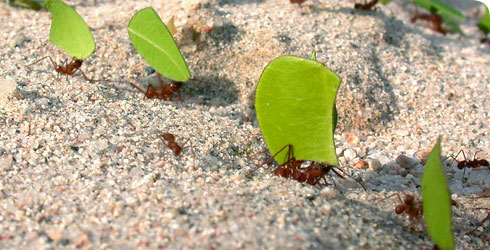Atta (leafcutter ants)
Atta is 1 of 283 genera of ants currently known, and was first described by Johan Christian Fabricius in 1818.
Nearly all ants are social - they live in colonies where some individuals focus on reproduction and some carry out tasks such as colony defence and foraging. This division of labour has allowed ants and other social insects like termites to become ecologically dominant in many ecosystems.
Atta are unusual in that they harvest leaves - most ant species are unable to do this. These harvested leaves are then used to grow fungus, which is used to feed the colony.
Some species of Atta have highly restricted ranges (such as Atta robusta, Fowler 2008). This is likely to be related to habitat destruction, with another species, Atta sexdens displacing Atta robusta in disturbed habitats (Fowler 2008).
In plantations, some leafcutter ant species are regarded as pests, since they prevent seedling germination and defoliate mature trees (Ballari and Farji Brener 2006).
Species detail
-

Taxonomy and distribution
Ants in the genus Atta collect leaves to feed the fungi they cultivate for food. Discover what else the fungi can be used for.
-

Biology and behaviour
Leafcutter ants create enormous colonies to accommodate a diverse workforce. Explore the range of tasks facing these fungus-farming ants.
-

References
Get reference material for Atta leafcutter ants.
Images

An Atta mexicana queen. She will have mated with a male winged ant (who immediately dies) and then landed and set up her colony after shedding her wings. Note the scars where wings were previously attached, and the difference in size between the queen and worker.
© Alex Wild, www.alexanderwild.com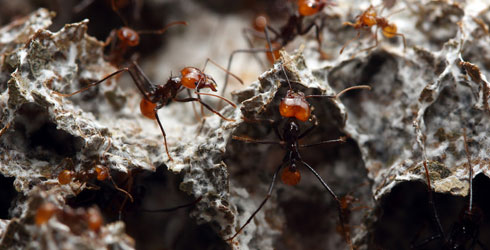
The fungus garden of Atta cephalotes. Leaves are fed to the symbiotic fungus, which is in turn used to feed the ant larvae. University of Wisconsin at Madison.
© Alex Wild, www.alexanderwild.com
A trail of Atta cephalotes workers returning to the nest laden with succulent leaves. Archidona, Napo, Ecuador.
© Alex Wild, www.alexanderwild.com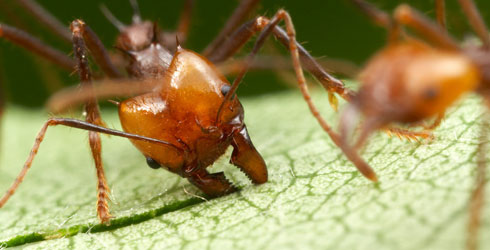
An Atta cephalotes worker removes a manageable portion of a leaf before carrying it back to the nest, where it will be used to feed the colonies’ fungus. Gamboa, Panama.
© Alex Wild, www.alexanderwild.com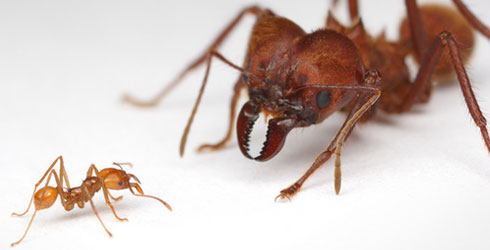
Just 2 of the many worker castes in Atta cephalotes. Certain tasks may be performed more efficiently by workers of a particular size, and so colonies with a range of different-sized workers are likely to be highly efficient. Captive colony at the University of Illinois.
© Alex Wild, www.alexanderwild.comAuthor
Dr Tom Fayle
Postdoctoral Researcher
Department of Entomology
A word from the author
"The fungus cultivating ant species are interesting for 2 reasons. First, they are useful model systems in which to investigate mutualistic and parasitic interactions. Second, they represent a degree of social organisation arguably unparalleled in the animal world, with the possible exception of the fungus growing termites."
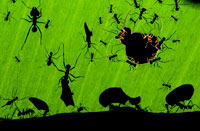
© Bence Máté - Veolia Environnement Wildlife Photographer of the Year 2010
Bence Máté's A marvel of ants was the overall winning photograph of the Veolia Environnement Wildlife Photographer of the Year 2010.
